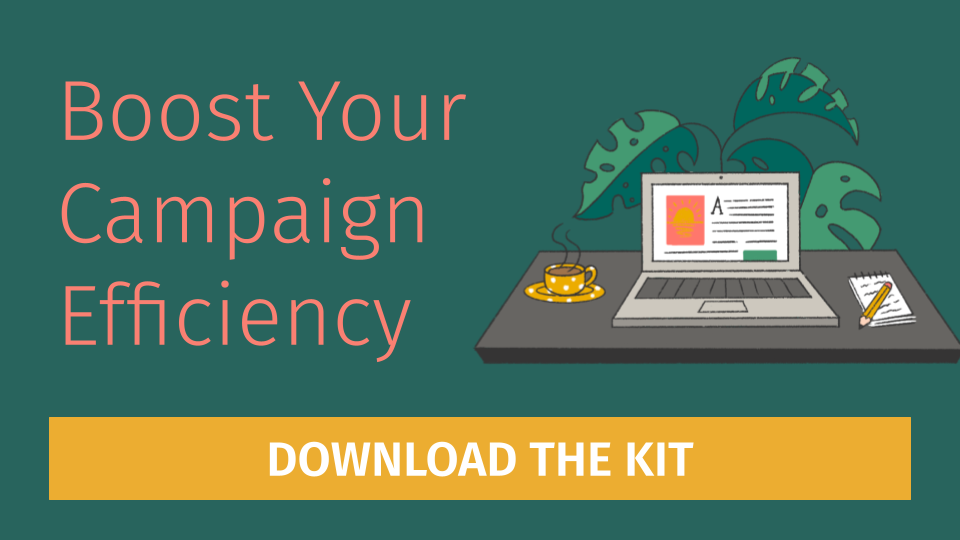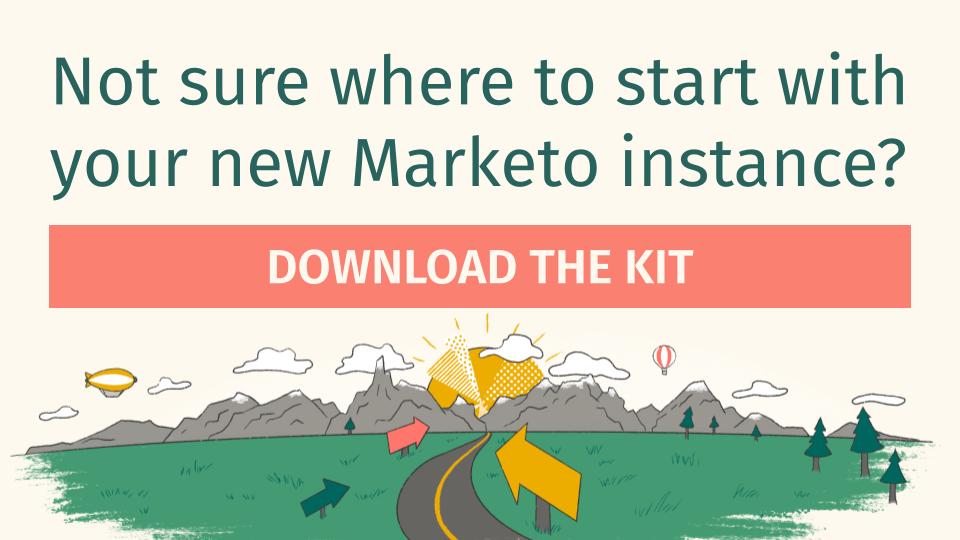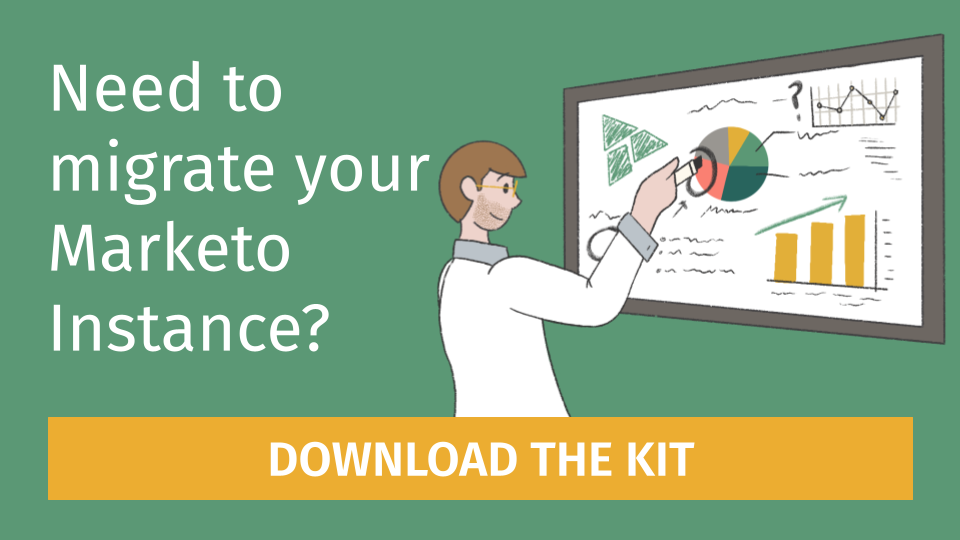Overview
Maximizing the impact of your marketing efforts is something all marketers strive to do. In order to accomplish this though, your marketing team will need to create campaigns that are relevant and will resonate with their target audiences. But how can this be done? The answer – personalized marketing content! Marketo Engage’s abundance of personalization tools can enhance your marketing efforts and significantly impact the effectiveness of your campaigns when used correctly.
What is marketing personalization?
Marketing personalization can be defined as using data and analytics to create content tailored to each customer based on their demographics and/or behavioral data. Failure to address these two areas in your email marketing strategy may lead to lower open and click through rates, higher unsubscribe rates, and ultimately, less overall engagement with your content. You want the most bang for your buck right? Then marketing personalization is an absolute must! If at all possible, you want some level of personalization in your email communications.
Why is marketing personalization beneficial?
Marketing personalization is a critical part of any marketing strategy. Your goal is to produce content that has the highest potential to perform well. Utilizing a personalized marketing strategy will allow your leads to feel like your messaging was made just for them.
In the world of email marketing today, you’ll probably receive over 1,000 emails a month prompting you to take some sort of action. The content you promote has to stand out from your competition, which aside from that being companies in the same industry, you’ll also be competing with the sheer amount of emails in someone’s inbox!
There are a few key benefits to utilizing personalization:
Higher open and clickthrough rates
Open rates are defined by how many people opened your email whereas clickthrough rates are determined by how many people who received your email actually clicked through it (at least once). Both metrics are useful in gauging how well your emails are performing. With personalized content, these rates can jump up significantly. According to “The Power of Personalization: 2021 Email Marketing Report” by Campaign Monitor, personalized email content has a 29% higher open rate and a 41% higher click-through rate than non-personalized content.
Better connection with target audience
Personalized content can help establish a sense of trust across your target audience. Your emails may appear less like a sales pitch and more like a recommendation of something that could be useful to them. How many times have you received an email that is clearly from an email blast (i.e. no personalization, content irrelevant, not based on any of your web activity)? These type emails tend to get deleted, marked as spam, or get the dreaded unsubscribe click. If you want to limit these negative interactions, put some effort into personalizing your email content, even if it’s something simple like addressing someone by their first name (this is the bare minimum though and you should do more if possible).
Drive lead conversion rates = higher revenue
Lead conversion, the rate at which leads (prospects) are converted into customers, essentially is an indicator of how effective your marketing campaigns are in targeting and nurturing the right leads. What you deem as a ‘success’ can be defined by the action an individual took whether that be making a purchase or downloading a piece of content. Regardless of this definition, higher lead conversion rates equate to more revenue, so continually monitoring the rate at which leads convert to customers must be a top priority of your marketing and sales teams. Personalized content has the potential to significantly boost your lead conversion rates because of its relevance to your target audience. By creating a more relevant experience for each recipient, you can drive higher engagement, increase customer loyalty, and boost your conversion rates.
Needless to say, providing personalized content is essential. But you may be thinking “How can I personalize my marketing content that makes every customer feel the messaging is tailored specifically to them?” The answer lies within a few of the many powerful tools Marketo possesses.
Key personalization tools that can be used in Marketo:
Tokens
What is it:
Marketo Tokens are a variable block of text that can be used in Smart Campaign flow steps, emails, landing pages, snippets, and web campaigns. They will help scale your instance and be more personal, dynamic, and consistent across all of the content you create.
How to Use Them:
Tokens can be used by inserting them exactly where you want a personalized block of text to appear. A Token helps personalize the message for the recipient in a way that’s unique to that individual. For instance, instead of using a generic greeting line of “Hello friend,” you can replace it by inserting this token {{lead.First Name}} which will populate with the lead’s first name. For instance, it could say something like “Hello John,”. Customization as minimal as this provides more value and makes your messaging seem less salesy. This is an example of a person Token. Aside from person Tokens, there are a variety of others that pull in additional types of lead specific information and include the following: company, campaign, system, trigger, program, and My Tokens (custom ones you create).
Best Practices:
When incorporating tokens, you want to be sure you’re using them to provide only necessary or valuable information to the recipient. For instance, using tokens to populate a first name, company name, or custom zoom link may make the most sense. From a scalability standpoint, you can utilize as many My Tokens as you like in your program templates so that the information you plug into each token gets populated within all assets of the program. Use tokens to your advantage for personalization and scalability.
Dynamic Content
What is it:
Dynamic Content is content a person will see specifically based on the segment they belong to defined by the smart lists in your instance. Segmentation categorizes your audience into different subgroups based on these smart lists and each of these groups are called segments.
How to use it:
Add dynamic content to your emails or landing pages to tell Marketo what type of content to populate for each person who views it. For example, a landing page may show different content based on someone’s industry or a global newsletter may have content in a different language depending on the recipient’s location. Dynamic Content helps you customize email and landing pages to better cater to specific audiences.
Best Practices:
Leverage segments to make your audiences as large and/or as specific as you need them to be. Dynamic Content allows you to create content unique to each individual without having to manually set up different asset (email, landing page) variations. Depending on the unique characteristics of your audience (could be age, industry, location, etc) will determine which smart list they belong to and therefore, what content they will see.
If they don’t qualify for any of the Smart Lists defined, they will be added to a default smart list and receive more generic type content. Ideally you want all leads to fall into one of your defined smart lists but that may not be possible for every person. To learn more about dynamic content and how to apply this through segmentations, check out this article.
A/B testing
What is it:
An A/B test is a randomized experiment that compares two (or more) variants and evaluates the success or performance of a single variable. To put it simply – A/B testing is how you compare two assets and determine which of the two performs better based on your performance criteria.
How to use it:
On the surface, A/B testing is a very straightforward process. You’re comparing two email assets to see which one performs better in your test. There’s the classic A/B testing method in which a test sample is randomly selected, where 50% receive version A and 50% receive version B. Once the results are in, the remaining individuals not in the test sample will receive the winner. You can also take a more modern approach to A/B testing by using your entire target audience as your sample (50/50 split amongst everyone) and from there you’ll get a winner based on the performance of the emails. With this approach you cannot send the winning email to this audience because they were included in the initial test, but you can apply what you learned from these results for future email sends.
Best Practices:
In order to get clear results from an A/B test, keep the following in mind:
- Only test when you have a clear hypothesis
- Only test one variable at a time
- Use a large sample size to test (the bigger the better)
- Evaluate results for statistical significance
- Have a plan for what to do with the results
- Continually test – this should be an ongoing effort
The take home message with A/B testing is that you observe the unique characteristics of the winner (i.e. subject line, preheader text, content within the email, etc.), and apply what you’ve learned to future sends. You’re providing ‘personalized’ marketing content by analyzing the results of your tests and providing future content based on your findings.
To learn more about A/B testing and how to set this up in Marketo, click here.
Trigger Campaigns
What is it:
A trigger campaign is a campaign that automatically gets activated based upon a specific action from a lead. It affects one person at a time based on whatever you’ve defined as a ‘triggered’ event. For instance, this can be when someone clicks a link in an email, visits a web page, registers for an event, or subscribes to a newsletter.
How to use it:
Use trigger campaigns when you want an immediate action to take place as a result of a specific action of the lead. For instance, if someone subscribes to a newsletter, a Fills out Form trigger could send them a confirmation email along with the newsletters at a specified cadence (weekly, monthly, etc.) immediately following them submitting the form. That person knows this occurred based on their initial action of subscribing, and the content they receive will be relevant to what they’re interested in. Trigger campaigns have at least one trigger in their Smart List. They are valuable because they are solely based on the action somebody took and get processed immediately.
Best Practices:
Turn off trigger campaigns when they are no longer needed – This will reduce the amount of active campaigns running and prevent any undesired actions from possibly occurring. Once a quarter, Marketo will look for smart campaigns that haven’t been triggered for 6 or more months and deactivate them automatically. If you know a campaign no longer needs to be active, it’s best to deactivate manually as soon as possible.
Convert trigger campaigns to batch campaigns if an immediate response/processing isn’t needed (for activities or campaigns that can run nightly) – Batch and trigger campaigns run independently so they won’t interfere with each other. However, having too many active trigger campaigns, which are always on and listening for triggered events, can slow down the processing speeds of your Marketo instance.
One thing to be very mindful of is when there are two more or triggers within your campaign. If a lead performs the action of any of the triggers in the Smart List, that campaign will be activated immediately, so you want to be sure that you’re ok with that happening, regardless of the trigger they activated.
Nurture Campaigns
What is it:
A nurture campaign (or Engagement Program) is a campaign that provides a steady stream of content to leads based on where they are in the buyer’s journey.
How to use it:
When creating a nurture campaign, you’ll want to think about the marketing funnel and how leads will be processed through it. There are three stages: top of funnel (TOFU), middle of funnel (MOFU), and bottom of funnel (BOFU). In the TOFU your primary goal is to provide general information about your products or services to gain some interest amongst your audience. Individuals may have little to no interest in your company at this time. If a prospect transitions to the MOFU stage, they are more likely to become a paying customer since they’ve expressed some level of interest in your product or service. The content you provide should include more details on your products or services and be done in a way that promotes purchasing behavior. Leads who are able to progress from MOFU to BOFU have now become your most qualified leads. These individuals are ready to purchase and are people you want to retain for the possibility of future purchases. In this stage, your sales team should be working more directly with prospects and content should be provided that will encourage the lead to take action.
When set up correctly, prospects, qualified leads, and customers will receive personalized email content in an automated fashion as they progress through the buyer’s journey. To ensure your messaging is relevant, you’ll want to implement some key best practices that will allow you to build meaningful relationships with the leads in your database.
Best Practices:
Establish specific goals – Have a clear idea of what you’re trying to accomplish and what metrics will determine if your nurture program is successful.
Have a defined target audience – In order to personalize the content in these emails, you’ll have to be specific in who you’re targeting and what will be relevant to them. You can create separate streams based on unique characteristics (age, industry, country, etc) so that each recipient falls in a well defined category.
Provide quality content – When determining what to include in your emails, think about the marketing funnel. As a lead progresses through the stages, you’ll want to provide content that’s more introductory to increase awareness in the TOFU stage, content that starts to encourage buying intent in the MOFU stage, and content that drives home taking action to help convert leads into a customer in the BOFU stage. This final stage includes your most qualified leads so the goal is to convert as many of these individuals as possible.
Conclusion
Personalization within your marketing strategy should be of utmost importance amongst your team. It can have a huge impact on the effectiveness of your marketing campaigns, increase engagement, provide relevant and valuable content, establish trust, and ultimately lead to business growth. Marketo’s wealth of tools allow you to tailor content to all leads in your database at scale. When used correctly, these tools can help take your marketing efforts to the next level.







